 Be Inspired Blog - Arizona
Be Inspired Blog - Arizona
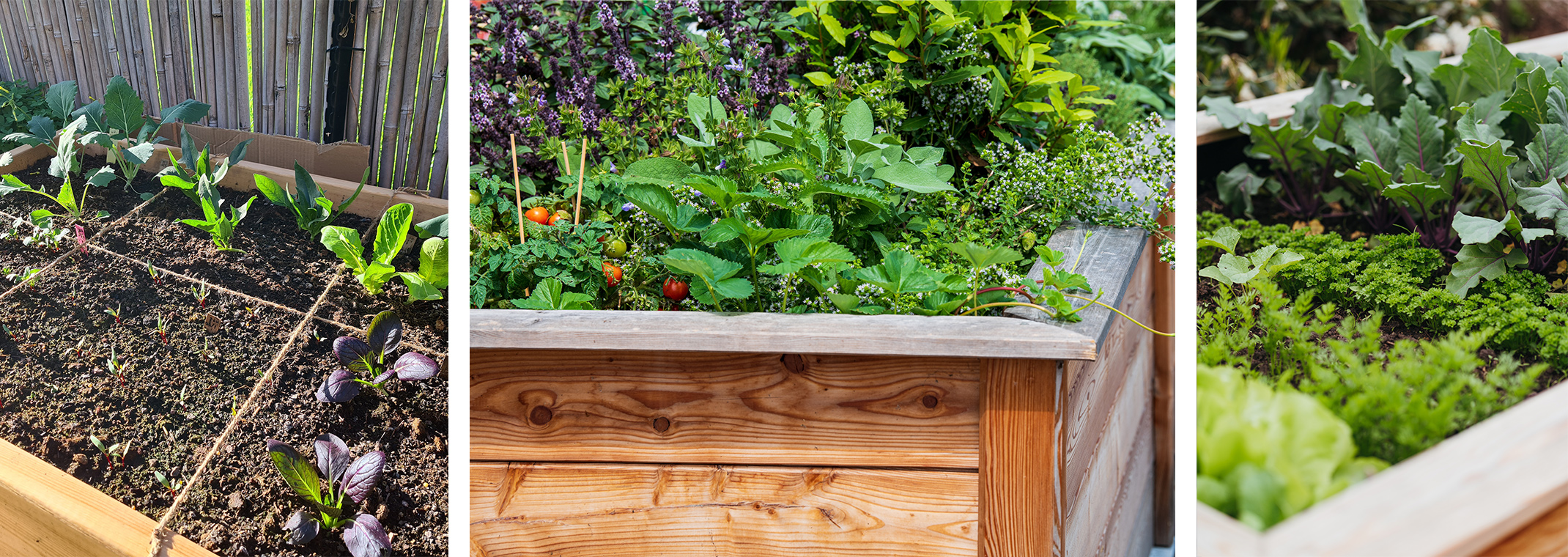
Designing the Perfect Raised Bed Garden Layout for the Valley of the Sun 🌵🌿
Gardening in the Greater Phoenix area offers a world of possibilities—especially when you embrace raised bed gardening! With our hot summers, alkaline soils, and ever-present sun, raised beds give you the control you need for healthy, productive plants. But before you start filling your beds with rich soil and seedlings, it’s worth thinking through your layout and plant placement for maximum success.
🌞 Start with Location: Sunlight Is Everything
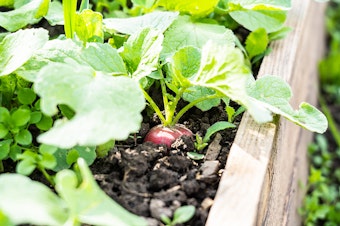 In the Valley of the Sun, your raised beds should be positioned to make the most of morning sun and get some protection from the harsh afternoon rays.
In the Valley of the Sun, your raised beds should be positioned to make the most of morning sun and get some protection from the harsh afternoon rays.
- Best placement: East-west orientation so taller plants can shade smaller ones in the afternoon.
- Avoid: South-facing walls or reflective surfaces that intensify heat.
- Bonus tip: If your garden area is exposed, consider adding a 30–50% shade cloth during peak summer months or planting tall sunflowers or corn on the west side for natural shade.
🌿 Bed Size & Pathways
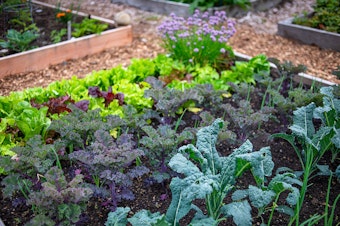 Raised beds typically range from 3–4 feet wide and 8–10 feet long—wide enough to reach the center from either side without stepping into the soil.
Raised beds typically range from 3–4 feet wide and 8–10 feet long—wide enough to reach the center from either side without stepping into the soil.
- Height: 12–18 inches is ideal for most vegetables. If mobility is an issue, go up to 24 inches.
- Pathways: Leave at least 2 feet between beds for easy access with a wheelbarrow or hose.
- Material matters: Untreated cedar, metal, or concrete blocks all work well; avoid railroad ties or treated wood due to chemical leaching.
🌱 Smart Layout Ideas for Valley Gardeners
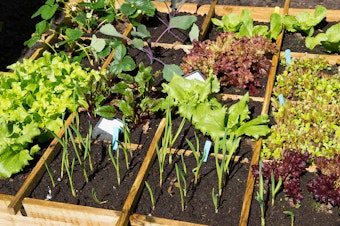 Here are a few raised bed layout options that work beautifully in Greater Phoenix:
Here are a few raised bed layout options that work beautifully in Greater Phoenix:
- The Classic Grid
Perfect for beginners and small spaces. Divide your bed into 1-foot squares (a la “square-foot gardening”).
- Great for: Lettuce, spinach, beets, radishes, bush beans, and herbs.
- Advantage: Easy to plan, plant, and rotate crops for year-round productivity.
- The Companion Planting Layout
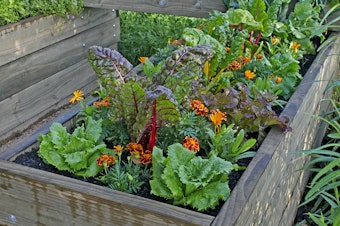 Use plant partnerships that help each other thrive while deterring pests.
Use plant partnerships that help each other thrive while deterring pests.
- Tomatoes + Basil + Marigolds: Repels pests and improves flavor.
- Peppers + Onions + Carrots: Efficient use of root and above-ground space.
- Cucumbers + Beans + Corn: A compact twist on the “Three Sisters” method adapted for smaller spaces.
- The Seasonal Rotation Layout
In Phoenix, you can garden nearly all year—but rotating crops seasonally helps prevent soil fatigue.
- Fall/Winter Beds: Broccoli, kale, spinach, lettuce, peas, carrots, onions, garlic.
- Spring Beds: Tomatoes, peppers, basil, beans, and squash.
- Summer Beds: Sweet potatoes, okra, eggplant, melons, and heat-tolerant herbs (Thai basil, rosemary).
💧 Water Wisely
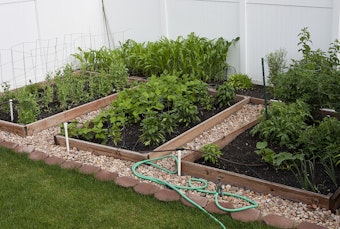 Even with the best soil, proper watering is key. Raised beds dry out faster than in-ground gardens.
Even with the best soil, proper watering is key. Raised beds dry out faster than in-ground gardens.
- Install drip irrigation with a timer—it’s efficient and conserves water.
- Mulch with 2–3 inches of organic compost, straw, or shredded bark to keep roots cool.
- Group plants by water needs—put thirstier crops like tomatoes or cucumbers in the same bed and drought-tolerant herbs (like rosemary and sage) in another.
🌸 Add a Pollinator & Beneficial Insect Bed
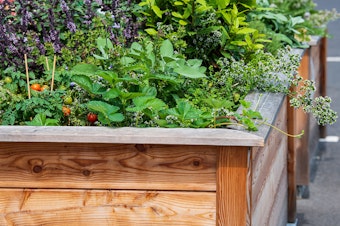 Dedicate one raised bed—or even a corner—to pollinator-friendly blooms.
Dedicate one raised bed—or even a corner—to pollinator-friendly blooms.
Try lavender, lantana, salvia, cosmos, or desert marigold to attract bees, butterflies, and beneficial insects that help your vegetable beds thrive.
🧑🌾 Final Tip: Keep It Manageable
Start small and expand as you gain experience. Even one or two well-planned raised beds can produce a surprising amount of fresh food year-round in our desert climate. Track what works (and what doesn’t) each season, and adjust your layout as your garden—and your confidence—grows.
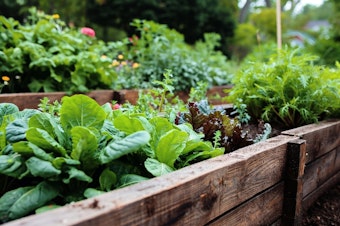 🌿 A Smart Raised Bed Layout
🌿 A Smart Raised Bed Layout
A smart raised bed layout combines thoughtful design, strategic planting, and seasonal awareness. In the Valley of the Sun, success comes from working with the sun, soil, and seasons—and a well-designed raised bed garden makes that easier than ever. Whether you’re growing crisp lettuce in winter or juicy tomatoes in spring, the right layout sets you up for a thriving, productive garden all year long.

